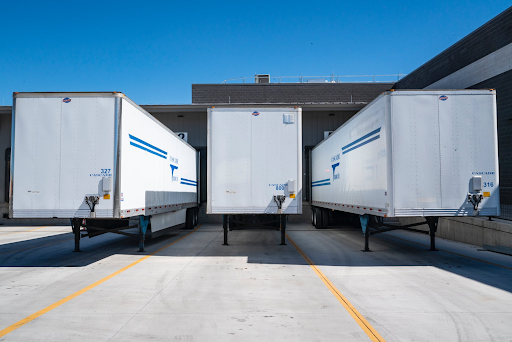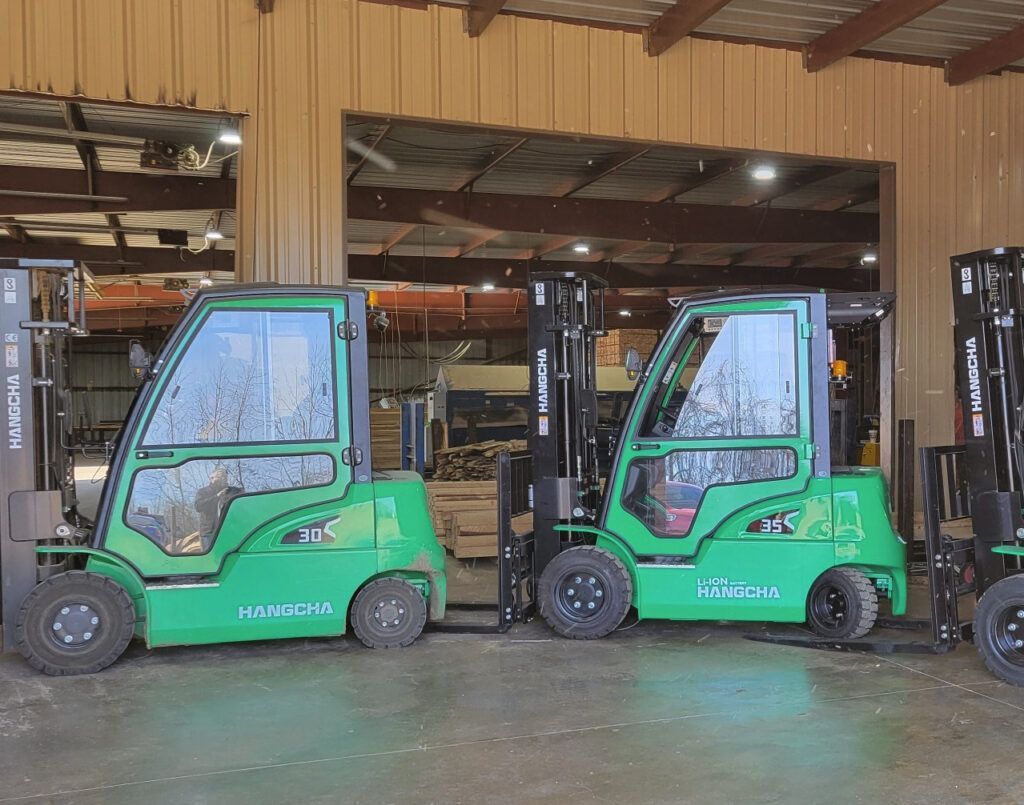Warehouse Loading Dock Glossary of Terms
It doesn’t matter if you’re a brand new warehouse manager or you’ve been on the job for years. It’s a good idea to understand the most important identifying terms and phrases for your loading dock and door area. Knowing this information helps keep your warehouse running smoothly, safely, and efficiently at all times.
Another safety measure that you should be taking as a warehouse manager is the proper installation of loading dock equipment and scheduling regular maintenance with experts. Ready to upgrade? In the process of planning a new warehouse project? Call our experts today at 638-486-1693 to help design, procure, and install the right loading dock doors and equipment.
Attachments: Add-ons for forklifts in order to handle and transport a load, and include things like clamps. claws, or carpet poles. Attachments change the capacity of a forklift and should be considered when it comes to choosing a dock leveler.
Communication Signals: Colored lights that show (communicate) which loading operation the dock operator and truck driver need to take next. These indicate to both the driver and the operator when it’s safe to pull up to or away from the loading dock — think green for “go” and red for “stop”.
Dock Bumpers or Pads: Pieces of durable rubber that surround the loading dock to prevent damage to the warehouse building when trucks pull up. They should be highly resistant to impact and made of materials that resist environmental factors and moisture.
Dock Leveler: Mechanism that helps to close the gap between docks and trucks, adjusting to meet varying heights of truck beds and creating a bridge that increases warehouse worker safety regardless of the size of the truck.
Dock Leveler Capacity: The weight limit of a dock leveler, determined first by the manufacturer’s rating and then compounded by factors which include top forklift weight, regular forklift cycles and speeds, and the lifespan expectancy of the leveler, among other things.

Dock lips: Lips at the dock’s edge that create a stop that prevents forklifts from driving off the edge of the dock during loading or unloading transport trucks. The lip will automatically lower and provide a smooth transition when it’s safe to do so.
Gross Vehicle Weight (GVW): Limit for any specific vehicle used in and around a warehouse (including forklifts) established by the manufacturer. GVW includes base weight plus cargo or loads and accounts for the weight of maximum passenger limits.
High-Speed Doors: Loading dock doors that lower and raise quickly, and can be a safe, energy-efficient option for warehouses looking to increase productivity and security. They are often installed in climate-controlled facilities that need to closely monitor the temperature.
Lifter Arm: Device on dock levelers that help to raise and lower or extend the main section of mechanical levelers. Lifter arms often use roller and spring tension mechanisms to help deploy the leveler smoothly and quickly.
Loading Dock Door: Entrances to the loading dock areas that are central to warehouse design and construction. Loading dock doors must control temperature and humidity and usually open automatically as trucks approach from the outside or forklifts approach from the interior.
Loading Dock Equipment: Any equipment used in the dock area of a warehouse to make it more efficient and safer as goods move in and out. This definition applies to things like dock levelers, seals, communication lights, dock bumpers, and more.
Overhead Doors: Commonly used loading dock doors that are sectional and raise and lower on a track system. Overhead doors usually consist of panels and are often insulated, and can be used in many standard loading dock applications.

Safety Gates: Barriers that block off pedestrian paths around loading docks. Dock safety gates prevent warehouse workers from walking through loading zones during times when it’s unsafe or prohibited to do so.
Seal: Rubber barriers between dock doors and the trucks that pull up to transport goods, and help keep out weather elements, pests, and even personnel. Dock seals are often used in climate-controlled warehouses and improve energy efficiency and working conditions.
Shelter: Flexible enclosures surrounding loading docks that protect trucks pulling up to transport goods as they are loaded and unloaded. Dock shelters are similar to dock seals but have a looser fit and generally last longer.
Vehicle Creep: Rocking motion that occurs with trucks or transport vehicles when it moves during loading or unloading. Vehicle creep can present gaps between the vehicle and the dock and create a safety hazard and must be accounted for in warehouse loading dock design.
The post Warehouse Loading Dock Glossary of Terms appeared first on Benco Industrial Equipment.




